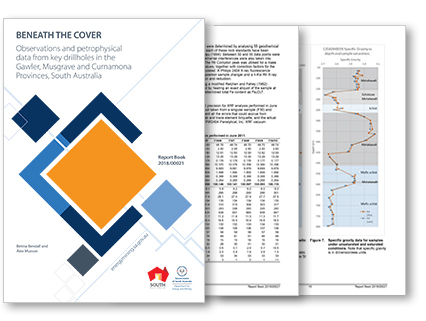Report sheds light on the Gawler, Musgrave and Curnamona regions.
 South Australia’s precompetitive geoscience data has been boosted with a new report and associated datasets produced from wireline logging and petrophysical analyses of exploration drillholes located in under explored areas of South Australia.
South Australia’s precompetitive geoscience data has been boosted with a new report and associated datasets produced from wireline logging and petrophysical analyses of exploration drillholes located in under explored areas of South Australia.
Vast areas of South Australia including the Neoproterozoic Officer and Permian Arckaringa basins, the Musgrave Province, the Gawler Craton and the Torrens Hinge Zone have substantial potential to host oil and gas, coal, tight gas/shale gas, native hydrogen, geothermal energy and various mineral resources. However, exploration and geological understanding of these areas has been constrained by extensive cover and limited data.
A joint project between the Department for Energy and Mining (DEM) and the South Australian Centre for Geothermal Energy Research (University of Adelaide) aimed to address this gap in knowledge. The project was facilitated by a grant from AuScope’s Australian Geophysical Observing System. A comprehensive dataset of wireline logs, geochemistry and other data were gathered from a series of drillholes located in areas of data paucity across the state, to create a series of data-rich control or ground truth drillholes.
The datasets created have wide utility and can be used to materially constrain geophysical inversions, heat flow modelling, in-situ stress, and geological models and interpretations of the shallow crust. The wireline logs acquired include borehole imaging/scanning, multi-survey tool (gamma, spontaneous potential, deviation, temperature, resistivity), full-wave sonic and magnetic susceptibility – conductivity. Data gathered on matching drill core includes gamma, density, resistivity, magnetic susceptibility, p-wave, thermal conductivity and diffusivity, and alteration chemistry via HyLogger.
Using these datasets researchers at the University of Adelaide and DEM have progressed our understanding of: regional basement structures and geometries by constraining geophysical inversions; the thermal structure and in situ stress regime, and their possible influence on migration mechanisms of ore-bearing paleofluids (i.e. uranium minerals systems, including iron oxide – copper–gold deposits); maturation and migration processes for hydrocarbons (including shale and coal seam gas); and geothermal prospectivity.
Download the report – Beneath the cover: Observations and petrophysical data from key drillholes in the Gawler, Musgrave and Curnamona Provinces, South Australia. The appendixes provide detailed information of the project methodologies, all the wireline logs and datasets gathered under the project, and synopses of some of the value-add studies that resulted from application of the collected data.
– Betina Bendall, December 2021


